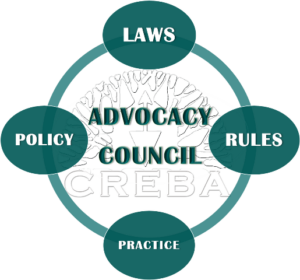Two House Bills seeking to amend the Balanced Housing provision of the Urban Development and Housing Act (UDHA) of 1992, as amended by RA 10884, are currently under deliberation by the House Committee on Housing and Urban Development.
HB No. 7230, authored by Reps. Jose Francisco Benitez and Maria Victoria Co-Pillar, seeks to require the compliance projects to be undertaken within the main project site or the locality where the main project is situated. It also seeks to involve the LGUs in the determination of price ceilings for socialized housing projects.
On the other hand, HB No 5754 by Rep. Roy Loyola seeks to add another alternative mode of compliance to the Balanced Housing requirement. In essence, the Bill provides that the developer may contribute directly to the LGU the monetary equivalent of the requirement (i.e. 15% of the total area or total cost of the main subdivision project, or 5% of that of the condominium project, as the case may be).
Site of Compliance Projects
In its position paper submitted to the House committee, CREBA expressed serious concern that the requirement for the compliance project to be “undertaken in the project site” would result in tremendous losses for developers, considering that:
- There would be no takers for the social housing component. The high cost of land covered by main projects would render the units unaffordable by the intended beneficiaries – i.e. the underprivileged; and
- There would be few takers for the main project, since the target markets therefor are not “inclusivity”-inclined. Until such time that a societal change has been achieved, operationalization of the inclusivity concept should be deferred.
CREBA also posited that locating the compliance project within the same locality as the main project is largely beyond the control of developers, considering the realities that (a) land for the purpose may not be available therein, and (b) many LGUs are inclined to disapprove such projects since underprivileged beneficiaries are unwelcome to them.
Direct Contribution to LGUs
CREBA supports this proposed alternative mode of compliance, as private housing developers have demonstrated their willingness to support socialized housing projects of LGUs.
The Chamber is of the view that this compliance mode could prove to be a much better alternative to the discredited Escrow Fund mechanism implemented by the DHSUD under its “incentivized compliance” scheme.
However, CREBA pointed out the ambiguity of the amendatory provision with respect to recoverability – i.e. if the developers’ contributions will in fact represent a dole-out and thus non-recoverable, then the amount required must be reduced to a viable or acceptable level.
The Chamber also proposed incorporation of specific implementing parameters and conditions in order to ensure that the benefits will accrue fully to social housing beneficiaries, and to close possible loopholes that may result in misallocation of funds or worse. It has been the experience that laws that leave much to the discretion of implementing bodies, particularly when considerable amounts of funds are involved, more often than not open avenues for misdeeds.
CREBA’s proposed revisions also seek to limit the role of the DHSUD to the bare minimum, in order to considerably minimize bureaucratic processes, insulate the process against political influences, and eliminate the pitfalls associated with the DHSUD’s implementation of the Housing Escrow mechanism.
Backgrounder – the DHSUD Escrow Fund Mechanism
Under the law, a developer proposing to undertake a subdivision or condominium project is required to develop an area for socialized housing equivalent to 15% of the total area or total cost of the main subdivision project, or 5% of that of the condominium project, as the case may be.
Developers may opt to comply with this requirement in any of the following manner:
- Allocating part of the main project area for development of the socialized housing component;
- Development of socialized housing in a new settlement;
- Joint-venture projects for socialized housing with an LGU, any of the housing agencies, another private developer, or an NGO;
- Participation in a new project under the community mortgage program.
Sometime in 2018, the DHSUD promulgated rules which added two alternative modes of compliance:
- Percentage of Investment Compliance (PIC), wherein the developer can indirectly participate in projects undertaken by third parties, by contributing funds amounting to at least 25% of the required compliance percentage – i.e. only 3.75% for subdivisions and 1.25% for condominiums.
- Incentivized Compliance (IC), wherein the developer can participate in projects of LGUs or the BALAI Program of the Key Shelter Agencies, by contributing funds amounting to at least 20% of the required compliance percentage.
Under either alternative, the developer’s participation is non-saleable and non-recoverable – meaning, that the developer acts merely as a fund contributor, and is not entitled to any share in the proceeds of the third party’s project.
The developer contributions under these schemes were required to be deposited in an Escrow Fund, which the DHSUD was supposed to allocate to projects of LGUs or other parties.
In March 2022, due to complaints by some of its member-developers, CREBA formally submitted to the DHSUD a position paper questioning both the legality and wisdom of the schemes.
Later, acting on reports of possible misappropriation of the Escrow Fund, the Commission on Audit came up with the following observations:
“The accuracy and existence of Escrow Funds and the validity of their utilization are doubtful due to (a) non-submission of essential documents to establish existence and accuracy of escrow funds which include the Escrow Agreements, Cost Estimate, Certification from the Escrow Agents/Banks on the initial Escrow Funds and their remaining balances; (b) uncertain validity and completeness of the Escrow Fund utilization; (c) inadequately reviewed projects on Balanced Housing Development Program (BHDP) compliance; and (d) lack of guidelines on the utilization and monitoring of Escrow Funds.”
As a result, implementation of the Escrow Fund scheme was suspended.


